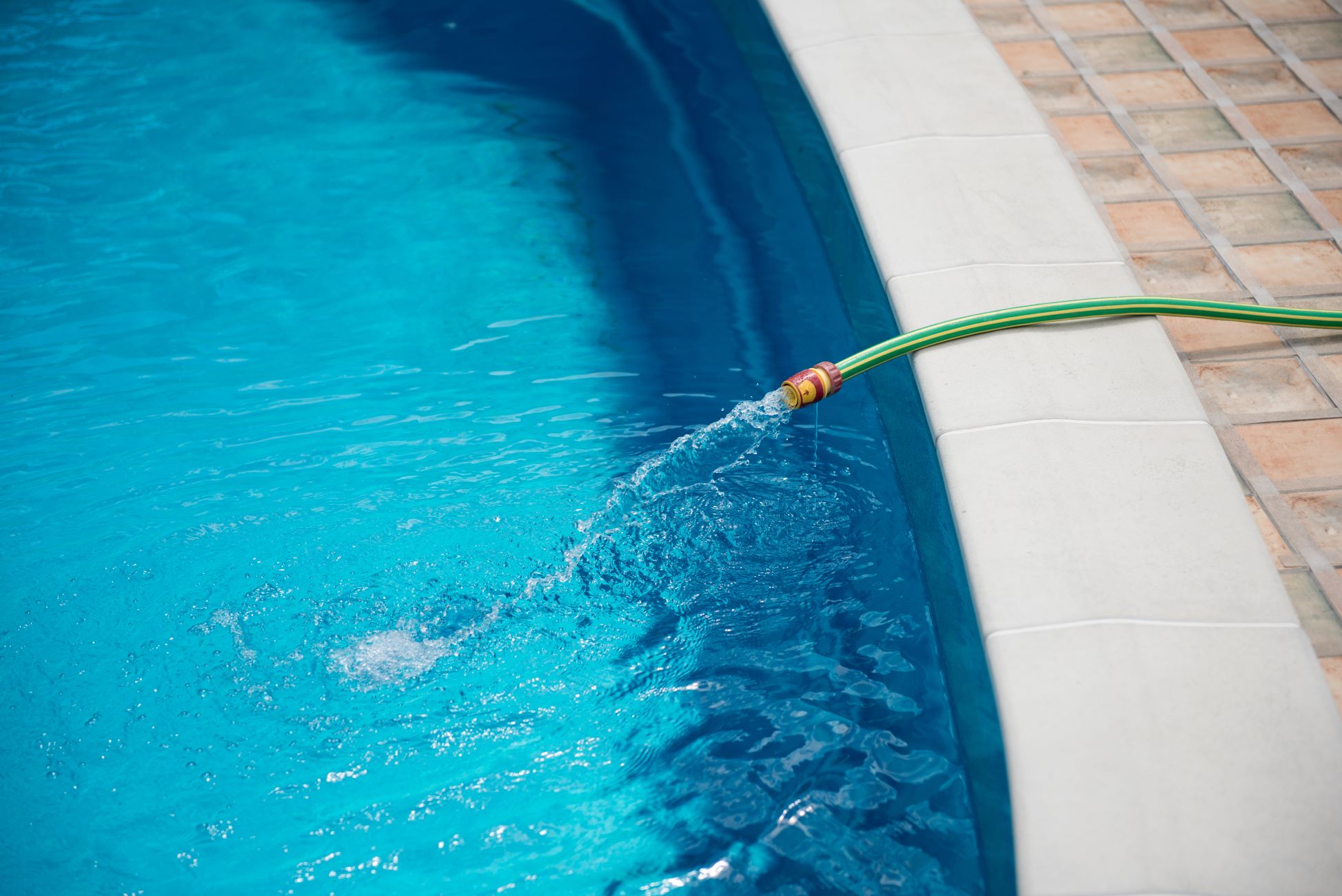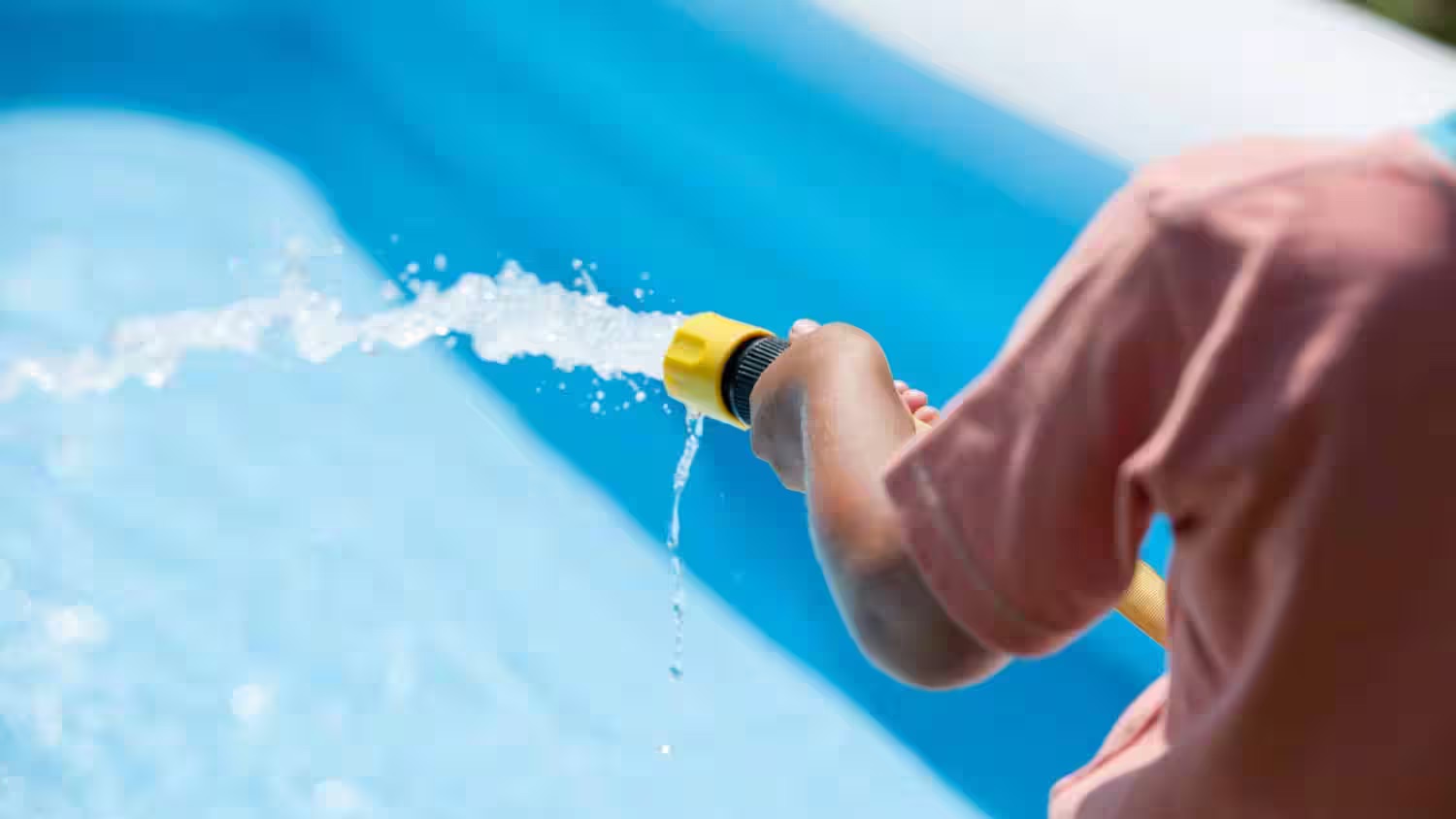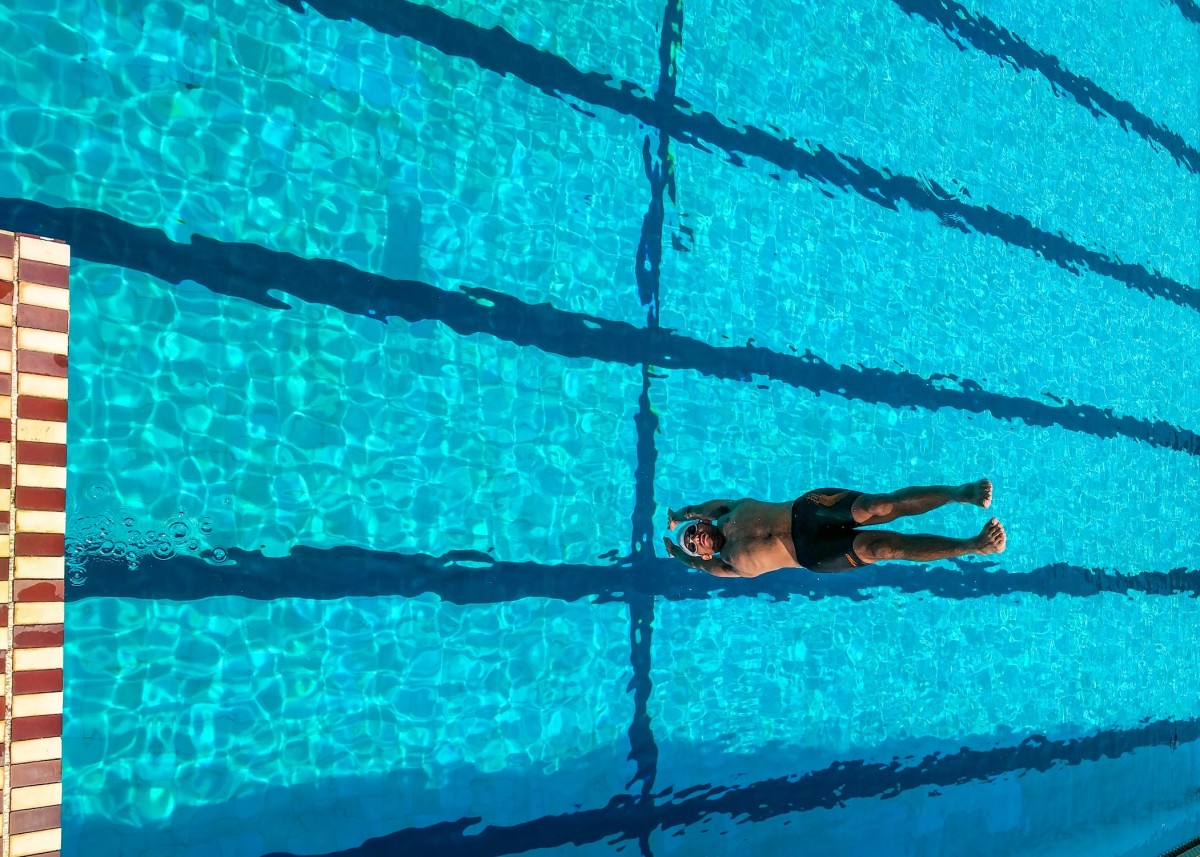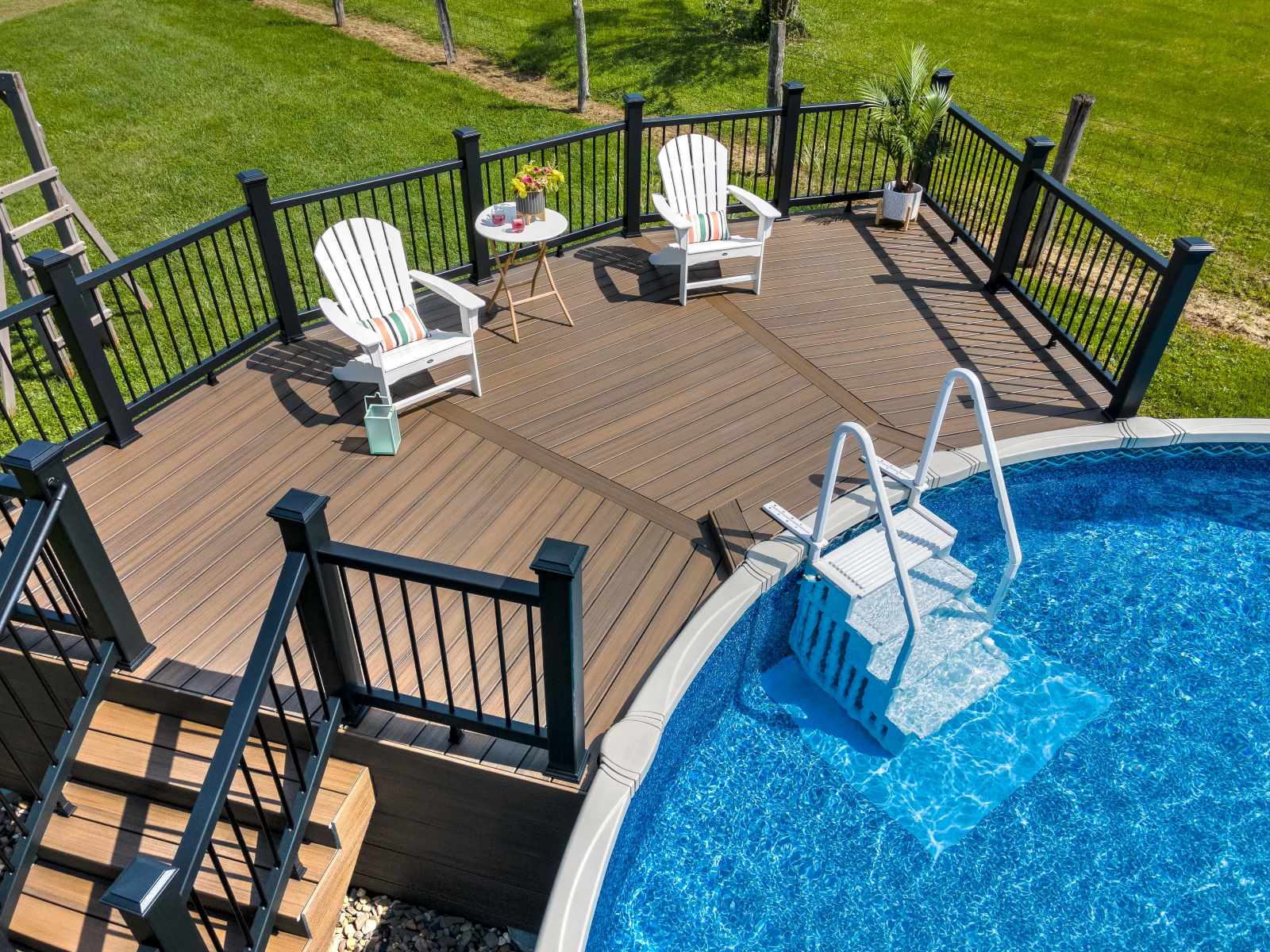Home>Gardening & Outdoor>Outdoor Recreation & Activities>How To Fill Up A Swimming Pool


Outdoor Recreation & Activities
How To Fill Up A Swimming Pool
Modified: February 18, 2024
Learn the best techniques for filling up a swimming pool and maintaining the perfect water level. Discover expert tips for outdoor recreation and activities.
(Many of the links in this article redirect to a specific reviewed product. Your purchase of these products through affiliate links helps to generate commission for Storables.com, at no extra cost. Learn more)
Choosing the Right Location for Your Pool
Selecting the perfect location for your swimming pool is crucial for ensuring a delightful and safe swimming experience. Here are some essential factors to consider when choosing the right spot for your pool:
-
Sunlight Exposure: Opt for a location that receives an ample amount of sunlight throughout the day. Adequate sunlight not only keeps the water warm but also helps in preventing the growth of algae and bacteria.
-
Accessibility: Ensure that the pool is easily accessible from your home and other outdoor living spaces. This will enhance the convenience and enjoyment of using the pool.
-
Terrain and Soil: Assess the terrain and soil conditions of the potential pool site. Avoid areas with steep slopes or loose, sandy soil, as these can lead to erosion and instability.
-
Utility Lines and Underground Obstructions: Before finalizing the location, check for the presence of underground utility lines, such as water, gas, and electrical lines. Additionally, be mindful of any underground obstructions, such as tree roots or large rocks, which could hinder the pool installation process.
-
Privacy and Aesthetics: Consider the level of privacy and the visual appeal of the location. A secluded area shielded from neighboring properties and street view can enhance the overall ambiance of your pool area.
-
Local Regulations and Permits: Familiarize yourself with the local regulations and zoning laws pertaining to pool installation. Ensure compliance with setback requirements, property lines, and any necessary permits.
By carefully evaluating these factors, you can confidently select the optimal location for your swimming pool, setting the stage for a relaxing and enjoyable aquatic retreat right in your own backyard.
Key Takeaways:
- Choose a sunny, accessible, and stable location for your pool to ensure warmth, convenience, and safety. Consider privacy, regulations, and aesthetics for the perfect spot.
- Prepare your pool area meticulously, ensuring safety, stability, and drainage. Enhance the ambiance with landscaping and safety features for a successful installation.
Preparing the Pool Area
Preparing the pool area is a crucial step that sets the foundation for a successful and enjoyable swimming pool installation. This phase involves a series of essential tasks aimed at ensuring the structural integrity, safety, and functionality of the pool. Here's a detailed guide on how to prepare the pool area for the upcoming installation:
-
Clearing the Site: Begin by clearing the designated area of any debris, vegetation, rocks, and other obstructions. This process creates a clean and level surface for the pool's foundation and facilitates smooth construction.
-
Excavation and Grading: If the pool requires excavation, engage professionals to carefully dig and shape the area according to the pool's design specifications. Proper grading is essential to ensure water drainage away from the pool and prevent potential flooding or water damage.
-
Utility Assessment: Before proceeding with the installation, assess the location for any underground utility lines, including water, gas, and electrical lines. This critical step helps avoid accidental damage to essential utilities during the construction process.
-
Installation of Support Structures: Depending on the pool type, install support structures such as retaining walls, concrete footings, or piers as per the manufacturer's guidelines. These structures provide stability and support for the pool, ensuring its longevity and structural integrity.
-
Laying the Foundation: Prepare the base for the pool by laying a sturdy and level foundation, such as a concrete pad or a compacted aggregate base. A well-constructed foundation is vital for preventing settling, cracking, and other structural issues over time.
-
Establishing Drainage Systems: Implement effective drainage systems to manage rainwater and prevent pooling around the pool area. Proper drainage safeguards against water accumulation, which can compromise the stability of the pool and surrounding structures.
-
Safety Measures: Prioritize safety by installing necessary safety features, such as fencing, gates, and non-slip surfaces, to create a secure environment, especially if children or pets will have access to the pool area.
-
Landscaping and Aesthetics: Enhance the visual appeal of the pool area by incorporating landscaping elements, such as plants, shrubs, and decorative features. Thoughtful landscaping can complement the pool's design and create a welcoming and inviting outdoor oasis.
By meticulously preparing the pool area, you lay the groundwork for a successful and enduring pool installation. This comprehensive preparation ensures that your pool not only functions optimally but also enhances the overall aesthetic and recreational value of your outdoor space.
Filling the Pool with Water
Filling your pool with water marks an exciting milestone in the pool installation process. It's a step that requires careful attention to detail to ensure the pool is filled efficiently and effectively. Here's a comprehensive guide on how to fill your pool with water:
-
Water Source Selection: Determine the water source for filling the pool. This can be from a municipal water supply, well water, or a water delivery service. Ensure that the chosen source provides clean and potable water suitable for swimming.
-
Initial Fill: Begin the filling process by directing the water into the pool. It's advisable to start with a moderate flow rate to prevent excessive splashing and disturbance to the pool's interior. This initial fill allows you to monitor the water level and make necessary adjustments as the pool fills.
-
Monitoring the Water Level: As the pool fills, regularly monitor the water level to prevent overfilling. Most pools have a designated water level indicator, typically located on the pool's skimmer or tile line. It's essential to maintain the water level within the recommended range to ensure proper functionality and aesthetics.
-
Filtration and Circulation: Once the pool reaches the optimal water level, activate the filtration and circulation system. This helps in distributing the fresh water evenly throughout the pool and initiates the filtration process to remove any impurities or debris.
-
Chemical Introduction: After the initial fill and filtration, introduce the necessary pool chemicals to establish water balance and sanitation. This includes adding chlorine or other sanitizers to disinfect the water, as well as adjusting the pH and alkalinity levels to ensure a safe and comfortable swimming environment.
-
Water Testing: Conduct comprehensive water testing using a pool water testing kit to assess the chemical balance and quality of the water. This step is crucial for identifying any imbalances and adjusting the chemical levels accordingly to maintain pristine water conditions.
-
Final Adjustments: Make any final adjustments to the water chemistry based on the test results. This may involve adding additional chemicals or making minor pH and alkalinity adjustments to achieve the ideal water balance.
-
Covering the Pool: Once the pool is filled, balanced, and ready for use, consider covering it with a pool cover to minimize water evaporation, maintain cleanliness, and enhance safety when the pool is not in use.
By following these steps, you can effectively fill your pool with water, ensuring that it is clean, balanced, and ready for endless hours of aquatic enjoyment.
Adding Chemicals and Balancing the Water
Maintaining the chemical balance of your pool water is paramount for ensuring a safe, sanitary, and enjoyable swimming environment. Properly balanced water not only safeguards the health of swimmers but also protects the pool infrastructure from corrosion and deterioration. Here's a detailed guide on adding chemicals and balancing the water in your pool:
1. Chlorine Treatment
Chlorine serves as a primary sanitizer, effectively eliminating bacteria, algae, and other contaminants in the pool water. When adding chlorine, ensure that the levels remain within the recommended range to prevent skin and eye irritation while effectively disinfecting the water.
Read more: How Do You Fill In A Swimming Pool
2. pH Regulation
Maintaining the pH level within the ideal range (7.2 to 7.8) is crucial for water comfort and equipment longevity. Use pH adjusters, such as pH increaser or pH reducer, to achieve the optimal pH balance. A balanced pH level prevents scale formation, corrosion, and enhances the effectiveness of chlorine.
3. Alkalinity Adjustment
Total alkalinity acts as a buffer, stabilizing the pH level and preventing rapid fluctuations. Adjust the alkalinity using alkalinity increaser or decreaser to maintain it within the recommended range (80 to 120 ppm). Proper alkalinity promotes pH stability and prevents potential damage to the pool surfaces and equipment.
4. Calcium Hardness Management
Calcium hardness refers to the concentration of calcium in the water, impacting its ability to prevent corrosion and scale formation. Test the water for calcium hardness and adjust it to the appropriate range (200 to 400 ppm for most pools) using calcium hardness increaser or reducer. Proper calcium hardness levels protect the pool structure and equipment from potential damage.
5. Shock Treatment
Periodically administer shock treatments to the pool to oxidize organic contaminants, eliminate chloramines, and restore water clarity. Shock treatments help in maintaining a sparkling and inviting pool environment, especially after heavy usage or adverse weather conditions.
Read more: How To Set Up A Swimming Pool
6. Regular Testing and Maintenance
Consistently monitor the chemical levels using a reliable pool water testing kit. Regular testing allows for prompt adjustments to the chemical balance, ensuring that the water remains clean, clear, and safe for swimming. Additionally, adhere to a routine maintenance schedule to uphold the water quality and prevent potential issues.
By diligently adding the necessary chemicals and balancing the water, you establish a harmonious aquatic environment that promotes both the longevity of your pool and the well-being of its users. This meticulous approach to water maintenance ensures that your pool remains a refreshing and inviting retreat for all to enjoy.
Maintaining the Water Level
Maintaining the proper water level in your swimming pool is a fundamental aspect of pool care and management. A consistent water level not only ensures optimal functionality but also contributes to the overall aesthetics and safety of the pool environment. Here's a comprehensive overview of the significance of maintaining the water level and the essential steps involved in this crucial aspect of pool maintenance.
Importance of Water Level Maintenance
The water level in a pool plays a pivotal role in preserving the integrity of the pool structure and equipment. Maintaining the recommended water level is essential for the following reasons:
-
Optimal Skimmer Performance: The skimmer, a vital component of the pool's filtration system, operates most effectively when the water level is maintained within the recommended range. A proper water level allows the skimmer to efficiently capture surface debris, such as leaves, insects, and other contaminants, preventing them from sinking and affecting water clarity.
-
Prevention of Pump Damage: Inadequate water levels can lead to air being drawn into the pump, potentially causing damage and reducing its efficiency. Maintaining the water level within the specified range ensures that the pump operates optimally, promoting proper water circulation and filtration.
-
Aesthetic Appeal: The water level significantly contributes to the visual appeal of the pool. An appropriate water level ensures that the pool's waterline tile or skimmer opening is not exposed, maintaining a polished and inviting appearance.
-
Safety Considerations: Maintaining the correct water level is essential for ensuring the safety of swimmers, especially in the case of younger or less experienced individuals. A consistent water level helps prevent accidental slips and falls near the pool's edge.
Steps for Maintaining the Water Level
-
Regular Monitoring: Routinely check the water level of the pool, especially during periods of high evaporation or heavy usage. Use the pool's skimmer or tile line as a reference point to gauge the water level accurately.
-
Refilling as Needed: If the water level drops below the recommended range, use a garden hose to add water to the pool until the proper level is reached. Exercise caution to avoid overfilling, as excessive water can lead to overflow and potential water wastage.
-
Addressing Evaporation: In regions with high temperatures or low humidity, evaporation can significantly impact the water level. Consider using a pool cover when the pool is not in use to minimize evaporation and maintain a consistent water level.
-
Professional Assessment: If you notice persistent fluctuations in the water level or suspect a potential leak, seek the expertise of a professional pool technician to conduct a thorough inspection and address any underlying issues.
By diligently maintaining the water level, you ensure that your pool operates optimally, remains visually appealing, and provides a safe and enjoyable environment for swimmers. This proactive approach to water level management contributes to the overall longevity and functionality of your pool, allowing you to fully appreciate the pleasures of a well-maintained aquatic retreat.
Frequently Asked Questions about How To Fill Up A Swimming Pool
Was this page helpful?
At Storables.com, we guarantee accurate and reliable information. Our content, validated by Expert Board Contributors, is crafted following stringent Editorial Policies. We're committed to providing you with well-researched, expert-backed insights for all your informational needs.














0 thoughts on “How To Fill Up A Swimming Pool”